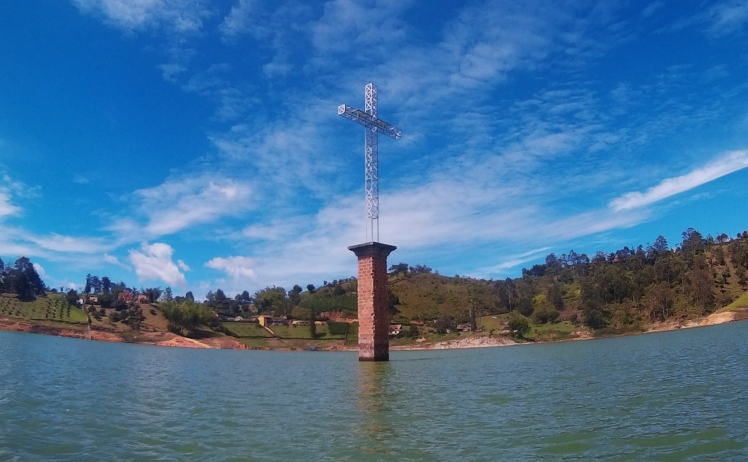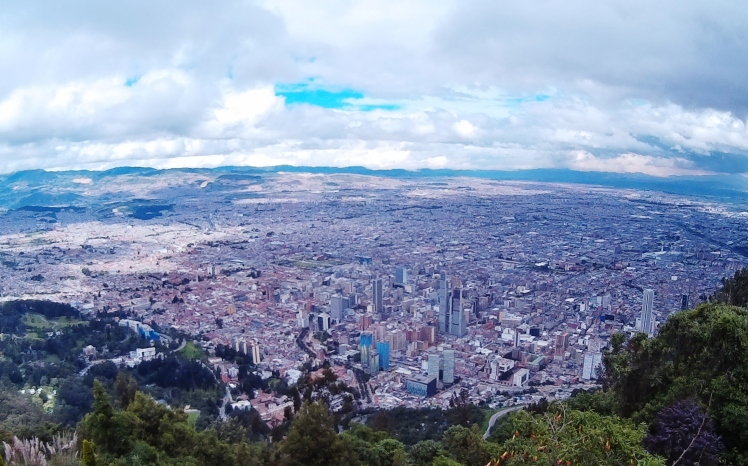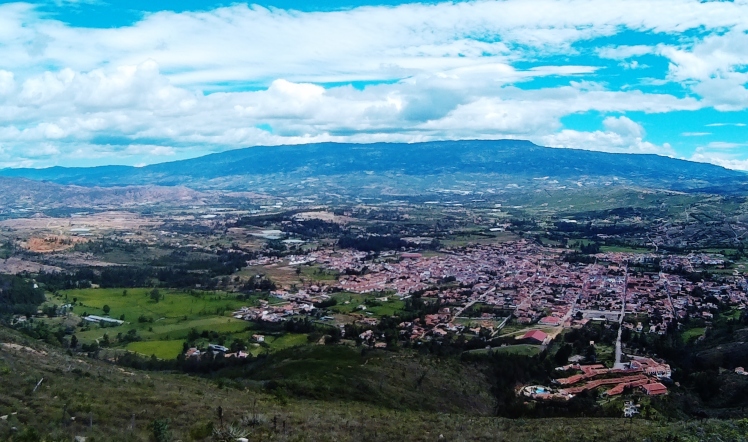Sitting on a bus, I started chatting to a woman next to me, who was just fascinated by the fact that I was in Colombia, and hence I’d left my own country to see someone else’s. When I asked if she has ever travelled to another country, she laughed gently, and said “No… the furthest I’ve been is 2 hours from my hometown. You see, estoy pegada a mi tierra – I am attached to my land”.
Most of us would probably say we are also attached to our land: the place we were born, where we were brought up, where our family lives, the place where our memories were made, that brings us comfort and always welcomes us with open arms.
5.7 million Colombians have been forced to leave the place they call home: that’s 12% of the population. 5 of these people were the Morales family. After months of threats, one day trucks full of heavily-armed men arrived in their rural village, and just told them to get out. “We just had to leave with absolutely nothing” said Mr Morales. This huge amount of displacement – meaning the forced movement of people, normally through conflict or natural disasters – has been mainly caused in Colombia by the rise in power of armed groups. Often suffering from scars from a violent eviction, perhaps having seen family members who ‘got in the way’ being murdered in the process, families like the Morales are forced by these groups to resettle in other areas, or receive the same fate.

The people made to leave their land generally come from very rural areas and the majority are indigenous people, both of whom form the poorest and most neglected groups in Colombia. Most have lived on their land for generations and make their living that way: farmers who are reliant on agriculture to sustain themselves and feed their family. The land concentration in Colombia was already and continues to be one of the most unequal in the world: 0.4% of landowners own 61% of the rural land, meaning small-scale farmers were already on the back foot in terms of power and influence of numbers.
Where do these people end up? A staggering 80% of displaced rural people have migrated to Colombia’s urban areas, mainly big cities. There are two principal reasons why people migrate towards cities. The first is the higher security of being able to blend into a city and being anonymous, which would make them a more difficult target for the armed groups, especially community leaders and those who resisted the land grab. The second is the better access to public services and infrastructure, such as running water, electricity, health centres, and education, which are all scarce resources if resettling in a rural area. However, the cities have had to ‘artificially’ grow extremely quickly, and these public services have been put under huge strain as a result, not being able to cope with the sudden influx. In already overcrowded cities, especially ones in mountains making it difficult to expand outwards, people had to start improvising ways to live there. You can now clearly see the results of this if you travel to the outskirts of cities such as Medellin or Bogota, where desperately poor suburbs have sprung up, with what look like temporary makeshift houses cramped together. Except these aren’t temporary houses – they’ve become people’s homes.

The Morales family found it hard to describe the effect that being displaced had on their lives. “Imagine a bomb blowing up your entire life, and when you surface you are suddenly nobody with nothing: nothing you have ever worked for or had in your life is there anymore. You have to start your whole life from scratch.” Displaced people suddenly have no way of making money, and they can’t necessarily use the skills they have as they don’t have the land or resources to apply them. This causes even more extreme poverty than they may have been in before. It particularly hits women and children the hardest; they often suffer sexual exploitation, violence and malnutrition, and young girls get forced into prostitution by gangs, or simply because it’s their only way of surviving. Although there may be public services available, many rural people lack the formal identification necessary to access healthcare or education.
There are varying reasons why these people lost their land to armed groups. Just one is that the Government in recent decades have been focusing a lot on development: on increasing trade, production and strengthening the economy. The idea, they say, is that in the long-run this will benefit the whole population as standards of living will increase. As part of this, the Government has encouraged the commercialisation of land, particularly for lucrative industries such as growing palm oil. There is a huge amount of money to be made, and huge profits in these sectors. But to access these profits, the poor farmers are ‘in the way’. And money talks. So, armed groups started forcibly taking the land, which somehow ends in the hands of the big companies and commercial interests, where the big bucks are to be made. The villages and existing agricultural infrastructure are completely destroyed, and new, lucrative crops are produced.
Many of the displaced people who lost their land were simply not in a position to struggle: when up against armed groups, a rural community does not have the physical resources, or voice that is going to be listened to. Further down the line, for those who find the internal strength to try to get their land back, they are very often finding that they don’t have the papers to prove it was theirs. Land was often handed over in oral contracts between friends or neighbours, or it’s been in their family’s possession for generations, and the papers no longer exist. The companies who are now on the land, however, miraculously do own possession papers: the papers say that legally the land is theirs.

A law was passed in 2011 called Victims and Land Restitution Law, which supposedly aimed to return stolen land to victims. However, those who have tried to access the law, and others speaking out against the land grabs, have suffered abuse, death threats, and there have been murders involved. For those who have got somewhere and managed to get close to getting back on their land, some can’t even find where they used to live: they don’t recognise it because it’s been completely destroyed and made over. But even once back on their land, what are they supposed to do on it without any extra support? They don’t have the resources to be able to just start again: to rebuild their houses, and replant their crops. Life can’t just go on as it was before.
Land grabs are complicated, but at their core, are a human rights issue. The people who lose their land are having their human rights severely abused. Where government support is lacking, there are many NGOs and grassroots organisations who fill-in and aim to help and support displaced persons, to recover their human rights that have been violated. Christian Aid in Colombia is supporting several partner organisations that work in their local areas to provide vital support, split into the strategies Legal and Advocacy. Legal gives people advice on their rights and access to legal resources; for example the organisation CCALCP is formed of lawyers who help displaced people with their land rights. They fight through the legal system on their behalf, teaching them about their human rights, and making sure they are taken seriously. This also crosses into Advocacy, which is letting people know what their rights are, and how to use their own voices to fight and stand up for themselves. It helps show them the importance of strength and resilience, and being proactive and organised as a community to work together. Organisations also work to help communities rebuild their livelihoods after being displaced.
International support in these cases where the State is failing its citizens in their basic human rights is essential. The presence and support in Colombia of influential organisations such as Christian Aid and Oxfam tell the Government that the international community is watching, and they care about what is happening in the country. International image is extremely important to governments; in a world that is increasingly interconnected and globalised, no country wants to be the one who is isolated and left out, and human rights violations from the State can elbow countries out of the international community. Therefore, these organisations are vital to improve the situation in Colombia, not just through their direct financial and programmatic support to the partner organisations, but simply through being a connection and a voice to the outside world. A voice that has been denied to millions of people who have been the victims of a country where violence equals power.
If you’d like to find out more or support displaced people in Colombia, the following international organisations work on this issue:
The film Los colores de la montaña (The colours of the mountain) is a moving depiction of this topic.